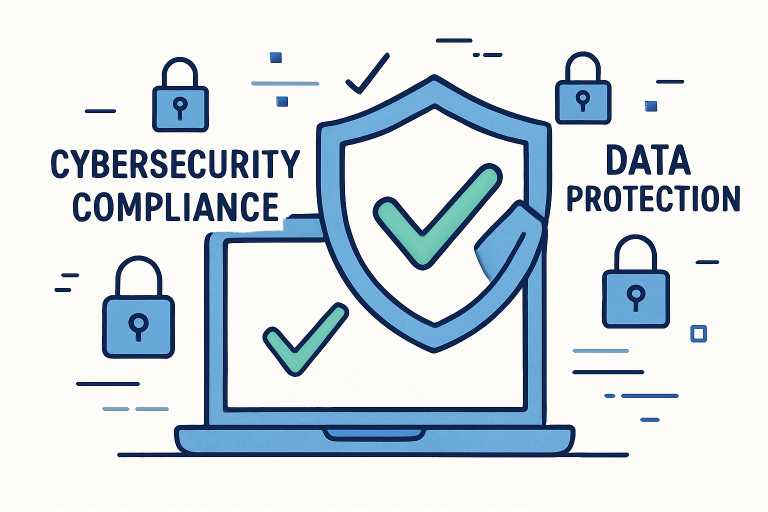The Evolving Regulatory Landscape
In the age of digital transformation, modern businesses face increasing pressure to comply with a complex and evolving set of cybersecurity regulations. Meeting these standards is not simply a matter of checking boxes; it is integral to protecting organizational data, safeguarding customer trust, and maintaining operational resilience. One area where compliance is particularly stringent is in the energy sector, where requirements such as NERC compliance demand that organizations adhere to rigorous cybersecurity and risk management protocols. Failing to comply with these standards for companies managing critical infrastructure can result in severe legal and financial repercussions.
Globally, regulatory frameworks are advancing rapidly. For example, the European Union has enacted the NIS2 Directive, broadening the array of organizations that must comply with cybersecurity requirements. Meanwhile, in the United States, recent SEC rules require publicly traded companies to disclose material cybersecurity incidents promptly and provide ongoing transparency about their risk management strategies. These measures reflect regulators’ acknowledgment that digital threats are evolving quickly, necessitating continuous adaptation from businesses across all sectors.
As a result, staying ahead of compliance requirements means businesses must monitor legislative changes and prepare to update their security policies, processes, and technologies. Companies can be caught off guard by the speed at which new threats or compliance directives arise, placing increased importance on agility and forethought. Industry commentators have noted that a proactive compliance posture is a cornerstone of sustainable business strategy, particularly for firms handling sensitive data or providing vital public services. More information about these trends can be found in resources such as Reuters.
Embracing a culture of compliance also helps cultivate trust among customers, partners, and investors, whose confidence increasingly rests on a business’s ability to defend itself against cyber risk. When organizations prioritize compliance, they send a clear message that data privacy and security are more than just regulatory obligations—they are foundational elements of good business practice.
Challenges in Achieving Compliance
Despite cybersecurity compliance’s critical role, many organizations encounter persistent challenges while trying to meet evolving standards. Recent surveys indicate that nearly 44% of cybersecurity professionals consider compliance with legislative requirements complex and time-consuming. The difficulties are further amplified for those operating globally, where navigating a patchwork of regulations adds to operational burden and cost.
Only a small fraction—just 3%—of businesses are currently considered resilient against modern cyber threats, highlighting a significant preparedness gap. Key obstacles include limited internal resources, a shortage of specialized cybersecurity expertise, and the technical challenges of keeping up with a continuously shifting threat landscape. Furthermore, as cybercriminals become more sophisticated, legacy security solutions may no longer provide adequate protection or compliance assurance.

Strategies for Effective Compliance
Establishing and maintaining cybersecurity compliance requires a structured, proactive strategy. Several measures can help businesses manage these demands effectively:
- Conduct Comprehensive Risk Assessments: Organizations must frequently evaluate their security risks, identifying weaknesses in policy, processes, and infrastructure, especially across third-party relationships.
- Develop Robust Cybersecurity Policies: A comprehensive set of policies and procedures, grounded in regulatory obligations and industry best practices, forms the backbone of effective compliance.
- Implement Continuous Monitoring: Leveraging modern monitoring tools provides real-time visibility into network activities, helping organizations respond swiftly to security incidents while maintaining compliance.
- Invest in Employee Training: Frequently updated, organization-wide training programs build a workforce alert to cyber threats and conscious of compliance protocols.
- Engage with Experts: Partnerships with experienced cybersecurity professionals can fill internal expertise gaps and ensure organizations stay current with emerging risks and regulations.
The Role of Leadership in Compliance
Leadership support is indispensable for successful cybersecurity compliance. The involvement of C-suite executives, especially CEOs and CFOs, signals a top-down commitment to regulators and the broader organization. Assigning roles such as Chief Information Security Officer (CISO) and regularly briefing boards on cyber risks ensures that security is prioritized at every level. According to reporting from AP News, executives’ personal accountability for compliance lapses has never been higher, further raising the stakes for strong leadership involvement.
Leveraging Technology for Compliance
Adopting advanced technology has become critical to managing compliance with modern cybersecurity standards. Artificial intelligence and automation platforms can transform threat detection and incident response, dramatically reducing the burden on IT teams and lowering the risk of costly breaches. According to recent studies, organizations that have integrated AI into their cybersecurity posture report average data breach savings of over £600,000 compared to non-users.
However, the enthusiastic implementation of AI and automation must be paired with vigilant governance. Businesses should regularly audit their tools and processes to ensure compliance enhancements do not inadvertently introduce new vulnerabilities or gaps. Keeping a technology pipeline aligned with current and anticipated regulations empowers organizations to remain secure and compliant as the threat landscape evolves.
Conclusion
Cybersecurity compliance is now a core pillar of sustainable business operation. As regulatory demands become more rigorous and threats more complex, organizations must adopt intelligent, forward-thinking strategies to safeguard data and maintain trust. By investing in risk-based compliance programs, cultivating strong leadership, and leveraging technological innovations, businesses can confidently navigate the uncertain waters of cybersecurity regulations.

